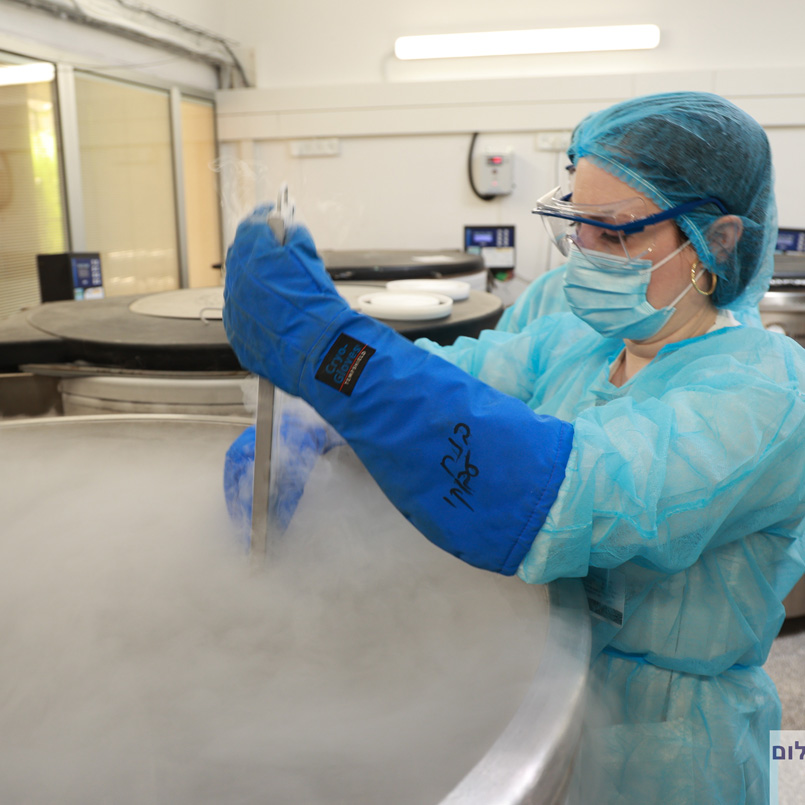What is Cord Blood
Cord Blood - The Gold of Human Biology
Birth. The magic of creation. In a single moment, the world changes, and we have no idea how much. A new path is opened for us as individuals and a family, and the responsibility … so much responsibility has been added. The number of decisions we must make during the pregnancy is enormous, but they were just a promo.
Thanks to advanced medicine and research, we have been given the right to use another gift we received from nature that is no longer transparent to us - umbilical cord blood.
Only during the first few minutes of the birth process does the possibility present itself to collect the blood that remains in the umbilical cord after the fetus emerges into the world. It is the gold of human biology - stem cells that have not yet been sorted and can be sorted for every cell - they can heal the body from various diseases and improve various birth defects.

Cord Blood - On the Path to Becoming a Legitimate Line of Treatment
While the human body is not continuing, as of now, to change and develop (except for the process of puberty as we know it) - the only thing that is progressing is the expansion of the self-healing possibilities that can be derived from the body at the level of its DNA and cells. There are a wealth of clinical studies, and the more one delves deeper into the research, the results are life-saving for quite a few people throughout Israel and around the world.

Cord Blood - A Glance at its Uses
The number of defects and diseases the human body can be afflicted with is enormous. Sometimes it is still surprising to discover new illnesses every once in a while. In practice, it cannot be otherwise - the extension of our life expectancy, the fast pace, and the abundance in which we live - all have their dark sides. One of them is diseases.

Gathering Cord Blood and Its Preservation
The Significance of Cord Blood Preservation
What is Done With the Kit After Its Receipt
Preserving Blood at the National Cord Blood Center
The National Cord Blood Center is located on the Sheba Tel Hashomer Medical Center campus. The private cord blood bank was established in 1996 by Professor Arnon Nagler, who performed the first cord blood transplant in Israel in 1994.
The National Cord Blood Center is a familial cord blood bank fully owned by the government hospital, which also includes the laboratories where the clinical tests of the blood units are performed and kept in the preservation farm located at the hospital.

Preserving Cord Blood - Phase by Phase
Momentarily the celebration begins. It is what you have been waiting for these past nine months. It’s fun. If you are already here, you have heard a few things regarding cord blood - and that’s a good thing.
We’ve prepared the main points concerning the actual preservation process to spare you the questions you might want to ask in the delivery room.

The Cord Blood Law
As early as 2005, the State of Israel understood the global trends, and here too, as the topic began to enter the public discourse, the government initiated procedures and protocols to produce standards and a uniform language regarding the preservation of cord blood for its use in research and treatment, both the preservation of public and private cord blood. Moreover, within the framework of the law, the government also ensured the establishment of appropriate oversight mechanisms as part of the responsibility of the Ministry of Health. The law was adopted and enacted in 2007.
The following are the main points regarding the Cord Blood Law - 2007
הסכמה מדעת לאיסוף
איסוף דם טבורי נעשה אך ורק לאחר הסכמה מדעת של היולדת ושל אבי הילוד. במקרים מסוימים מספיקה רק הסכמתה וחתימתה של היולדת.
זכויות קניין על מנת דם טבורי
מנת הדם הטבורי שהופקדה בבנק דם טבורי פרטי הינה קניינו של הילוד ממנו נלקחה ונמצאת באחריות הוריו.
נהלי טיפול במנה
ניתן דגש אודות המידע הרפואי הנדרש לקבל מהיולדת, הבדיקות הנדרשות שיש לבצע במנת הדם הטבורי שנאספה, כמות הדם המזערית הנדרשת ומספר התאים הנדרש כדי לקבוע את טיבה ואיכותה של מנת הדם.
לקריאה נוספת:
חוק דם טבורי התשס"ז, 2007
Permit to Operate
Establishing and operating a cord blood bank requires issuing a permit signed by the Director General of the Ministry of Health. It means that every hospital (i.e., all of them) where cord blood is collected is issued a permit by the Ministry of Health, and the activity is conducted under its supervision.
Informed Consent for Collection
Cord blood collection is conducted only after the informed consent of the birth mother and the newborn’s father. In certain cases, the consent of only the birth mother is sufficient.
Intellectual Property Rights on the Cord Blood Unit
The unit of umbilical cord blood deposited in a private cord blood bank is the property of the newborn from whom it was taken and is the responsibility of his/her parents.
Unit Handling Procedures
Emphasis is placed on the medical information required from the birth mother, the required tests to be performed on the collected cord blood unit, the minimum amount of blood required, and the number of cells required to determine the nature and quality of the blood unit.
For additional reading:
Cord Blood Law - 2007
Additional Instructions for Parents
The Ministry of Health has published a guide for parents that provides comprehensive and independent information regarding cord blood preservation in the State of Israel.
Every parent needs to be aware of the information that contains the various regulations, guidelines, and permits.






